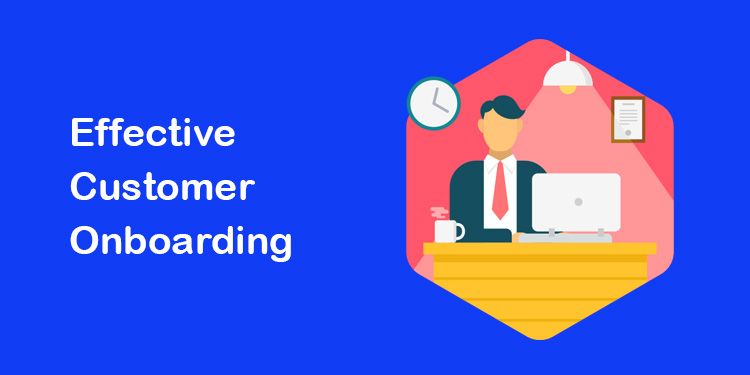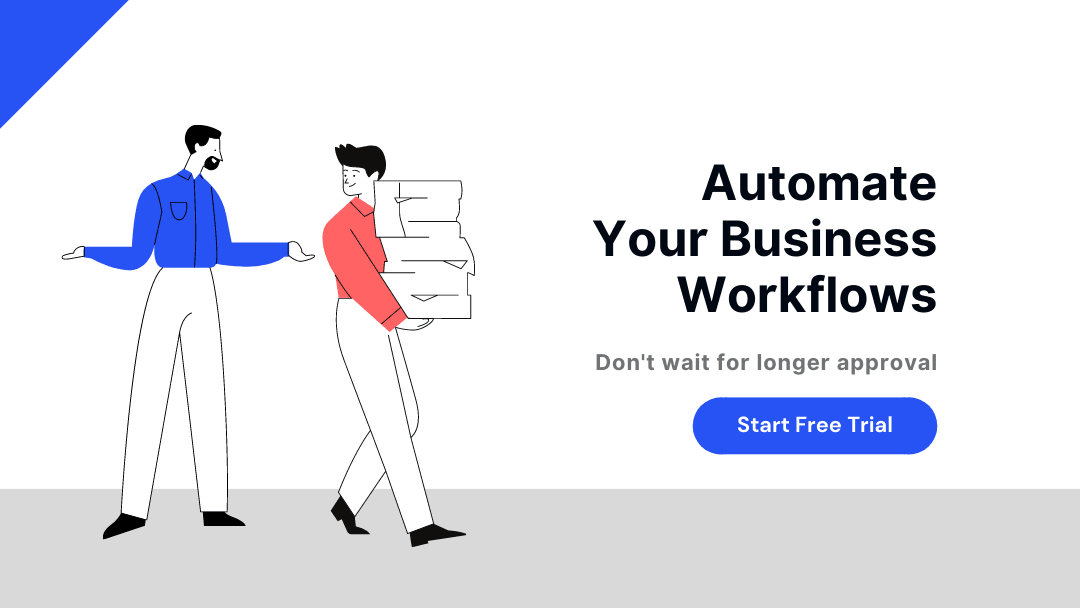Customer Onboarding Process: It’s Not Just a Process – It’s an Experience

Customer onboarding is a crucial component of business strategy and customer success. It’s also an area where many companies are still struggling, but it doesn’t have to be this way. Customer onboarding is a process that helps customers get familiar with your business, products, and services. It will help you connect with new customers and build their trust and loyalty over time. Here we’ll discuss some of the key components required for an effective onboarding process.
Customer Onboarding Process Defined
Customer onboarding is the process of getting new customers to a point where they can use your product successfully. It’s important to make sure that your customers know how to use your product, as well as are happy with their experience. It’s the first step in creating a lasting relationship with your customers, and it’s what really sets you apart from other companies out there.
Customer onboarding can be broken down into three key components: trust-building, loyalty-building, and advocacy creation (more on that later).
Why Customer Onboarding is Important
Customer Onboarding is important because it helps you retain customers, get more customers, and reduce customer churn.
1. Retention:
Customer onboarding can help you increase customer retention by making sure that your customers have all the information they need to make a purchase. This includes providing them with a clear sense of what their goals are, as well as providing assistance when they’re not sure how to get there.
2. Acquisition:
Your business will likely need to acquire new customers in order for it to grow and expand over time — so customer onboarding can help with this process as well! By making sure that potential buyers are aware of what they’re getting themselves into (and why), then making it easy for them to start using your product or service right away will make it easier than ever before–which means more people are buying from your company overall!
3. Churn Reduction:
One way customer onboarding reduces churn rate is by helping reduce attrition rates where existing users stop using products/services after having been employed for some time without any notable increases in usage patterns due against expectations.”
It’s important to understand that customer onboarding is an ongoing process. It’s not just about getting your new customers up and running; it’s about building trust and loyalty with them over time.
The best way to think about this process is as a funnel: you have certain steps in the funnel (e.g., registering for an account), but at every step along the way, there are opportunities for you to build new relationships with your customers or strengthen existing ones through different activities like sending out emails or conducting surveys.
For example, when I was working with one of my clients on their CRM system last year, they had a lot of problems with email automation—it was hard for them because they weren’t sure how much communication was necessary between themselves and their sales team so they weren’t able to get everything done in advance before sending out automated emails out every month without fail (which would have been ideal).
Designing a Complete Customer Onboarding process
Customer onboarding is a process, not just a one-time experience. It’s a continuous process that spans from the first contact with your brand through to the last interaction with your customer.
There are several ways you can measure customer onboarding:
• How long does it take for a new user to reach their first goal?
• How many steps are involved in completing their first task?
• Is there any friction involved when users try to complete tasks (e.g., bad user interfaces)?
1. Create a Personalized Onboarding Program
If you’re not already using data to personalize your onboarding process, it’s time to start. You can use this information to create a customer profile that will be used in every step of the onboarding process and throughout the entire customer relationship.
The first step is creating an account for each new customer, so make sure your website is set up with a user-friendly signup process that allows users to create accounts easily without having any trouble navigating through the site. Next up: when they’ve signed up and created their profile, make sure there are clear instructions on how they can update or delete their information as needed (or even better yet—ask them if they’d like help).
2. Make It Easy for Customers to Contact Support
When it comes to the customer support process, you can’t afford to be stingy. Make sure your customers can easily contact you and get answers to any questions or problems they might have.
The best way to do this is by having a clear and easy-to-use help desk that’s always available. You should also provide a phone number so people can reach out if they don’t want or need an online chat session with you (which we’ll talk about later).
If the customer has an issue with something specific in their account—for example if their credit card was declined when making a purchase—they may not want an email response from your company; instead, they’ll probably prefer talking directly with someone who knows exactly what’s going on. So offer both options!
3. Keep Up the Positive Reinforcement
Customer onboarding is a long process and can be frustrating. To keep your customers engaged and motivated, you need to provide positive reinforcement. The key is to use examples of what has been successful with other customers in order for them to see the value of doing things differently than they did before.
For example, if someone says, “I wish we had this feature,” or “I wish we offered this service,” then explain how your product or service helps them achieve their goals better than any other competitor’s product or service does by providing an itemized list of benefits such as increased revenue generation from new leads generated by the sale of additional resources like training materials or consulting services (and so on).
How to Create a Customer Onboarding Flow That Works
It’s important to understand that creating a customer onboarding flow that works is more complex than it sounds. You’re going to need to start by defining the problem before you can solve it.
This means setting goals for yourself and your team so that everyone knows what they’re working toward and how they’ll measure success when everything is said and done. When setting these goals, don’t worry about what other people’s goals might be—you’ll have plenty of time for those later! Be ambitious but realistic; if there are too many roadblocks standing in your way (for example: “We’ll never get this thing done”), then take a step back and ask yourself whether or not the goal itself makes sense anymore (if not, why was it ever set?).
Establishing an Effective Customer Onboarding Process
To build an effective customer onboarding process, you need to have a solid understanding of what works and what doesn’t. For example, suppose you want your customers to be successful in their first experience with your product or service (and not just get through it). In that case, you should make sure that they understand exactly how the process works as soon as possible after signing up. This can be done using templates or even live training sessions where an employee walks them through the entire process step by step.
So how do you decide on which template or flow is best? Well, there are many factors that come into play here, but one thing we’ve found helpful is identifying where people struggled most when first getting started with a new product or service:
The 4 main steps in the customer onboarding process
* Introductory video (and more)
* Signing up for the service
* Creating an account and starting to use the product or service
* Support services
1. Introduction stage – the first 30 days of the relationship with your customer
The first 30 days of a relationship are important. What you do in those first 30 days will determine if your customer will become a loyal customer or not. You need to make sure that when they walk in the door, they feel like they’re at home and know what to expect from you and how to get what they want from you.
It’s also important for you not to give up too soon on someone who has been interested in what you have to offer; instead, keep trying until it works out! If a potential client hasn’t made an initial purchase yet but is still interested in learning more about what your business has to offer, then there’s still hope!
2. Success stage – The first 100 days of the relationship with your customer
The success stage of your relationship with your customer is a time to build trust and confidence. It’s also a time to show that you are trustworthy, and reliable and will deliver on your promises.
You need to be able to prove this by showing what you have done so far (and what you’re going to do next). This could be as simple as sending them an email or telling them about an upcoming event that they might like. The key here is consistency; if we can’t trust our salespeople then we won’t buy from them either!
3. Fulfillment stage – 180+ days until the end of your contract/agreement with your customer
The fulfilment stage is when you’re finally able to put your product in the hands of your customer and see it work for them. If everything goes well, this will be the last time we’ll see each other for a while. You’ll have done everything you could think of to make sure that they’re happy with their purchase, but now it’s up to them!
If all goes according to plan:
• They’ll be satisfied with their purchase (not just “satisfied”). This means they love what they bought enough that they’d recommend it to others who might also enjoy it too!
4. Advocacy stage – 180+ until the end of your contract/agreement with your customer
At this point, you’re probably wondering how long it will take for your customer to leave. The answer is: not as long as you think. In fact, most people don’t leave at all! They’ll continue to buy from you even after the contract is over because they like what they see and feel comfortable with their relationship with your company.
That being said, there are still some things that can make or break whether or not a customer will stay with you for good:
• How engaged are they? If someone isn’t interested in what we have to say or doesn’t care about our product/service (or worse yet—they just want something from us), then we’ve already lost them forever! You should always strive for quality interactions that build rapport between yourself and your customers–this means making sure every interaction counts by engaging them on an emotional level first before talking business later on down the line.”
To succeed in business today, you must be proactive and have a meaningful relationship with your customers.
The New Age of the Customer and Why You Need an Effective Customer Onboarding Strategy
Companies have been taking customer onboarding seriously for years. But what about the new age of the customer?
The good news is that it’s a great time to be in business because your customers are expecting more from you than ever before. In fact, according to Statista’s 2021 Customer Experience Report, 44.5% of organizations worldwide revealed that they perceive customer experience as a primary competitor differentiating factor and 45% of organizations believe that artificial intelligence will shape the customer experience in the next five years.
The bad news is that these expectations are changing faster than ever!
What Makes an Effective Customer Onboarding Process?
As a business owner, you are responsible for the success of your company. Your customer onboarding process is an essential part of that strategy.
Onboarding is not just a process; it’s also a mindset and should be considered as such throughout your entire organization. It must be viewed as an ongoing effort that takes place throughout each stage of the customer life cycle: first contact with your brand (i.e., lead generation), through sales conversations, post-purchase interactions, and beyond into loyalty programs—all the way up until they leave again!
This means that every employee at all levels needs to understand what their role will be in terms of onboarding new clients or renewing existing ones and then everyone involved must follow through on those commitments consistently over time so as not only to ensure smooth transitions between phases but also encourage repeat business from consumers who enjoy personal attention from employees personally committed to providing exceptional service every time around.
How to Measure Customer Engagement with Onboarding Programs
To measure customer engagement, you can use a combination of metrics, and here is a list of some of the common ones:
• Customer satisfaction surveys (including open rate and completion rate)
• Customer feedback forms (e.g., reviews)
• Support tickets (e.g., answered by a live person)
• Engagement metrics such as the number of conversations with customers per day; time spent on site/app; the amount of money spent per month
The key to successful customer onboarding is to personalize it for each customer.
Customer onboarding is a process that helps new customers get up to speed with your product or service. It’s the first impression of your brand, and it sets the tone for ongoing interactions.
It’s also important to note that customer onboarding isn’t just about creating an automated flow from start to finish; it should also be customized for each user. This can be achieved through several different methods:
• Personalized emails sent out by human beings (which are often done via chatbots)
• A dedicated website tailored specifically towards each user (such as Google customer support/service desk). It should include information like how long they’ve been using Google Products, what kind of problems they’ve encountered in those products, and how much time they spent troubleshooting them.)
Good vs. Bad Customer Onboarding Process
So, you’re finally getting to grips with the idea of ‘good customer onboarding.’ You know it’s about making your customers feel welcomed and valued, building trust, and encouraging them to buy again. But what does that really mean?
It means:
Making it easy for people to buy from you – this one is pretty self-explanatory (and not just because we’re using an example of a website). If they need help finding what they’re looking for (or if they need help finding it), then there’s no point in having good customer onboarding!
Learning about your customers – this is where things get interesting! You can ask questions like “What made you choose us over our competitors?” or “What do you think makes us better than the others?” or even simply, “How was our service today?” This way, you can learn a lot about your audience and craft your offerings according to their expectations.
The old saying goes that you can’t make an omelette without breaking a few eggs. And while this may be true, it doesn’t mean that the process of creating an effective customer onboarding strategy is easy or simple. It takes a lot of time, research, and effort to build a meaningful relationship with your customers so they will become loyal advocates for your brand. The fact is that no business can survive for long without having loyal customers who will continue buying from them over and over again (or at least until they find another competitor).
Onboarding is all about getting new customers up and running with your product. In a nutshell, onboarding can take many forms, but it all starts with a personalized experience that helps users get comfortable with their new tool. The best way to ensure that customers feel at home in your product is by having them fill out some basic information about themselves and their needs, then using those details as a basis for tailoring the rest of the onboarding program down the road.
You should also give them some specific tips on what they should expect from your service or product, so they don’t feel lost in an ocean of features when first trying it out—this will help them make informed decisions about whether or not this particular purchase would benefit them before ever committing money into anything else required by law! This is where Cflow comes to save the day, which helps you get a seamless customer onboarding experience. Try Cflow for Free!






